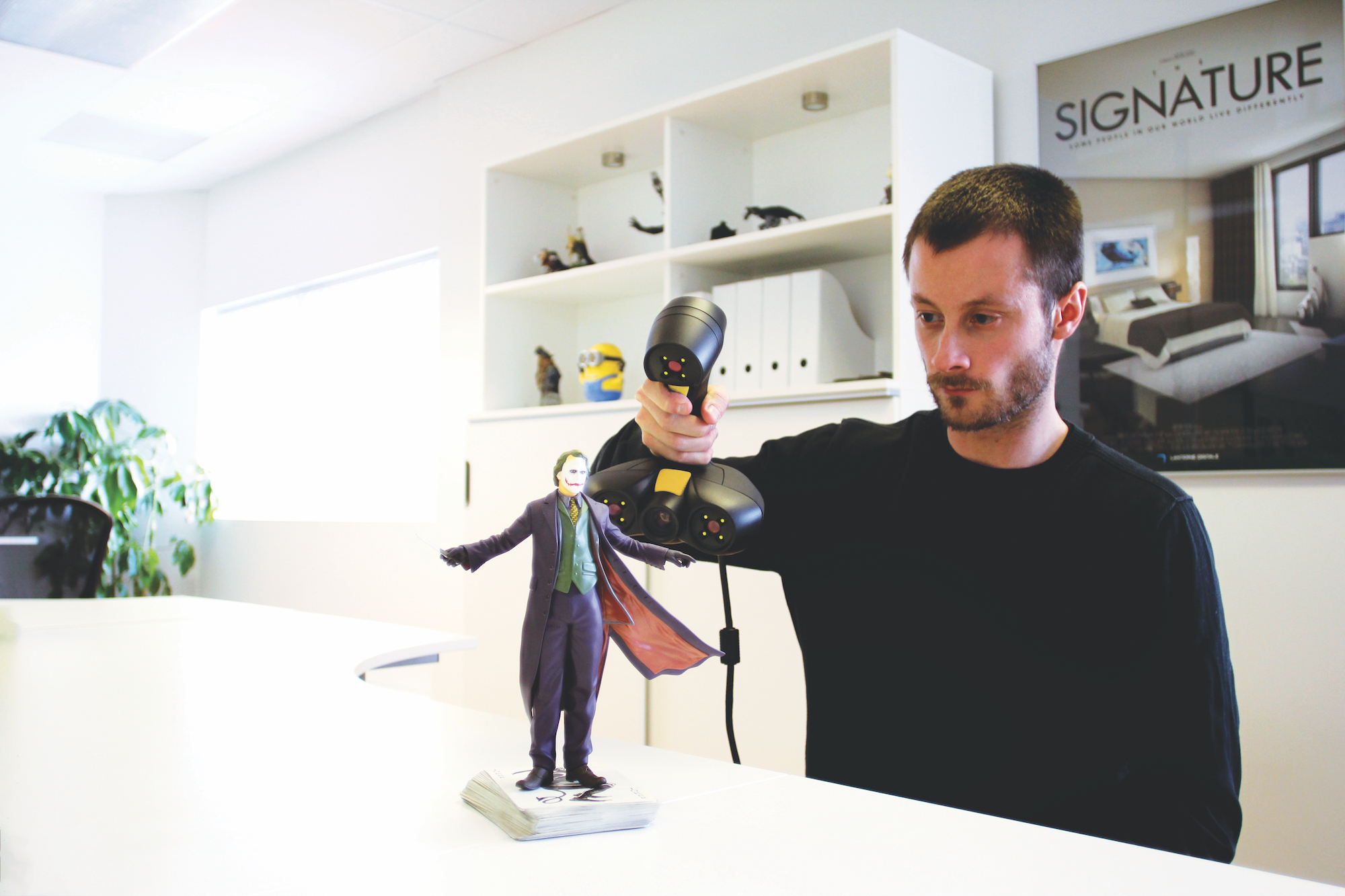
As additive manufacturing techniques and technologies continue to mature, more and more industry sectors, companies and design teams are realizing the tremendous potential 3D printers, used with in conjunction with 3D scanners, has for accelerated innovation, operational gains, supply chain resiliency, re-localization and on-demand small-batch production.
As both technologies become increasingly democratized—both in terms of ease of use and price points—engineering and design teams as well as up-and-coming innovators are paving the way for modern engineering ecosystem that will transform the way products are engineering and produced.
Additive manufacturing pros often jokingly compare 3D scanning and 3D printing to a washer and dryer when referring to today’s new desktop engineering workflows in professional- and manufacturing-centric environments. Although the comparison may seem odd, it is actually quite reflective of what the combo can achieve together.
How? When a 3D printing project requires creating or enhancing an original 3D model or physical object, a 3D scanner can leapfrog a lot of additional work. If no 3D scanner is available, 3D models have to be created from scratch using CAD software, like SolidWorks. This can significantly slow down design and engineering timelines.
On the other hand, using a 3D scanner can enable you to quickly and easily digitize a physical object to speed up any design, prototyping or reverse engineering process.
Let’s assume you have to reverse engineer a small and complex part to repair a sub-assembly. And let’s say that either you don’t have a 3D model of the part or you want to efficiently produce the part yourself, without having to wait for some third-party supplier overseas.
All you have to do is scan the part using an affordable, professional-grade 3D scanner proven to capture 3D measurements of small and highly intricate parts. Within minutes—and regardless of your skill level—the 3D scanner generates a mesh file.
The mesh file, once cleaned and aligned using easy-to-use 3D scanning software, can be imported into your preferred CAD solution. You’re now free to make any changes or improvements you need to the 3D model.
Once you deem the 3D model is ready, all you have to do is send it to the 3D printer. The end result is either a prototype that you can then 3D scan again to make further modifications or an 3D model that can be produced in batches.
3D scanners can shave months and even weeks off of product development and R&D workflows. It’s important to also note that the unbeatable flow between 3D scanning and 3D printing is conducive for sophisticated additive manufacturing workflows, passionate hobbyists—and everything in between. In reality, 3D scanning and 3D printing, when leveraged in unison, offer limitless possibilities in terms of creative and iterative experimentation in all phases of a 3D printing project, including conceptual ideation, design, production, reverse engineering, documentation, and maintenance and dismantling.
Here are some compelling examples of 3D scanning and 3D printing used in sync:
- Scaling a handmade clay model in a wind tunnel to optimize aerodynamics
- Designing and printing a replacement door handle on a scanned car
- Fine-tuning a 3D printed prototype design by digitizing manual modifications
There are a number of ways manufacturers, workshops, art and heritage restorers, die-hard tinkerers, and others can use 3D scanning and 3D printing tech together to their advantage. Innovation cycles can be slashed in half. Manufacturing costs can be substantially reduced. Just-in-time production can be assured. When using the right professional-grade 3D scanner, there are limitless possibilities to what you can accomplish.
Subscribe to Our Email Newsletter
Stay up-to-date on all the latest news from the 3D printing industry and receive information and offers from third party vendors.
You May Also Like
Air Force Awards Fortius Metals $1.25M to Qualify 3D Printing Wire for Hypersonic Applications
AFWERX, part of the US Air Force Research Laboratory (AFRL), awarded a Direct-to-Phase II Small Business Innovation Research (SBIR) contract worth $1.25 million to Colorado’s Fortius Metals, to accelerate qualification...
US Air Force Awards JuggerBot $4M for Large-format Hybrid 3D Printing
Large-format 3D printer manufacturer JuggerBot has received a $4 million grant to develop a large format 3D printer, courtesy of the Under Secretary of Defense, Research and Engineering Manufacturing Technology...
Where Have All AM’s Unicorns Gone?
In the rapidly evolving world of 3D printing, startups valued at over a billion dollars, known as unicorns, once seemed as fantastical as the mythical creatures themselves. While a few...
How My Childhood Fascination with Planes Led to Investing in 3D Printing
My fascination with aerospace started young, and I started studying planes–identifying them in the sky and learning everything I could about how they work. Fast forward to my first week...

































